Angelo Stiller may not be the most physically dominant presence on the pitch, but few midfielders in Europe can match his intelligence, passing range, and ability to dictate the rhythm of play. The 23-year-old Stuttgart midfielder has quietly become one of the Bundesliga’s most efficient playmakers—and now, with a DFB Pokal title, rising market value, and growing interest from elite European clubs, he’s no longer flying under the radar. Once a promising youth product at Bayern Munich, Stiller’s steady rise through Hoffenheim and Stuttgart has positioned him as a potential heir to Toni Kroos—both in style and in destination.
Player Information
Angelo Stiller is a left-footed defensive midfielder born in Munich on April 4, 2001. He currently plays for VfB Stuttgart, where he has made 47 appearances, scoring four goals and providing 11 assists. He also won the DFB-Pokal this year against Arminia Bielefeld, contributing two assists in a 4–2 victory. His market value is estimated at €38 million (according to Transfermarkt), and his contract runs until 2028.
Stiller joined Bayern Munich’s youth academy at the age of nine and made his first-team debut on October 15, 2020, in a German Cup match against FC Düren. In 2021, he transferred to Hoffenheim, where he gradually earned playing time and eventually impressed enough to earn a move to Stuttgart in 2023 for a fee of €5.5 million.
His breakthrough over the past two seasons has attracted interest from prestigious European clubs such as Real Madrid, who reportedly see him as a potential successor to Toni Kroos. Kroos himself acknowledged in an interview that he could be a strong candidate to replace Kroos. He is undoubtedly a player to watch in the coming years.
The German “Architect”
Angelo Stiller is known for being a complete midfielder in terms of playmaking. He excels at advancing the ball with forward passes, switches of play, through balls, and short combinations.
However, he is not physically dominant. His defensive contributions are notably weaker than his exceptional offensive passing qualities. He is a technical defensive midfielder but lacks the physicality to impose himself in duels or cover large distances effectively.
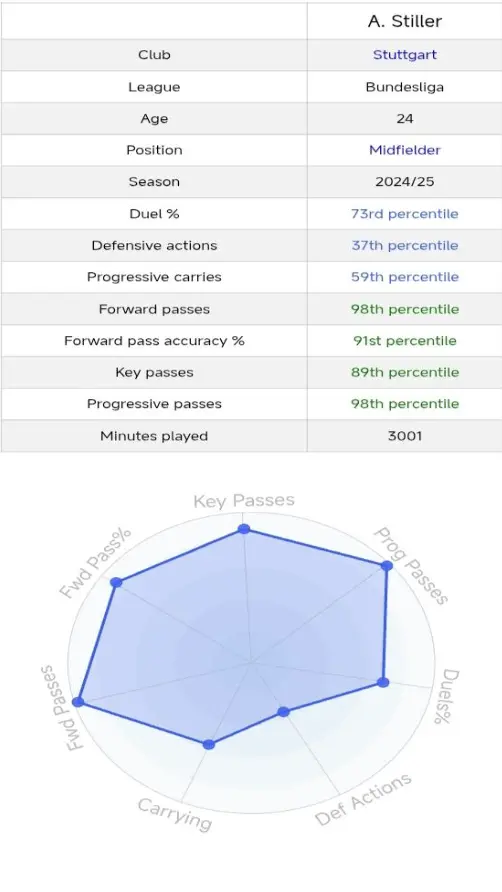
His role at Stuttgart is to act as the team’s deep-lying playmaker — dictating tempo, offering structure in possession, and helping his teammates choose the best attacking options. In this sense, he is almost omnipresent in the team’s build-up phase.
In Hoeneß’s system, he forms a well-balanced partnership with Atakan Karazor, a more physical and defensively oriented midfielder who handles much of the ball-winning responsibilities that Stiller is less suited for.
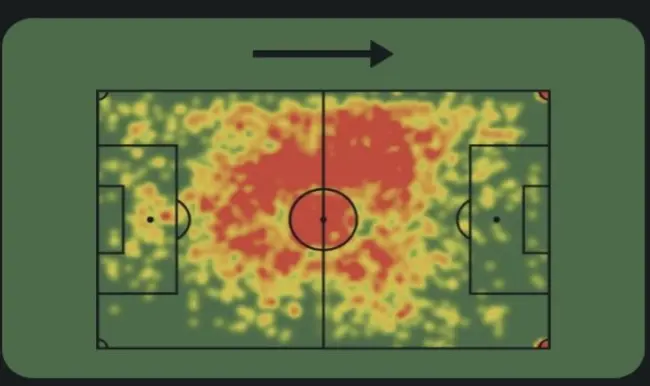
An Exceptional Passer
Stiller’s greatest strength lies in his passing. Tactically, he often drops between the center-backs to improve the team’s build-up from deep. Among midfielders in Europe’s top five leagues, Stiller ranks among the best in terms of passing accuracy and volume. He completes over 90% of his passes per match, with impressive efficiency in long balls and forward passes. This makes him a crucial link in Stuttgart’s engine room.
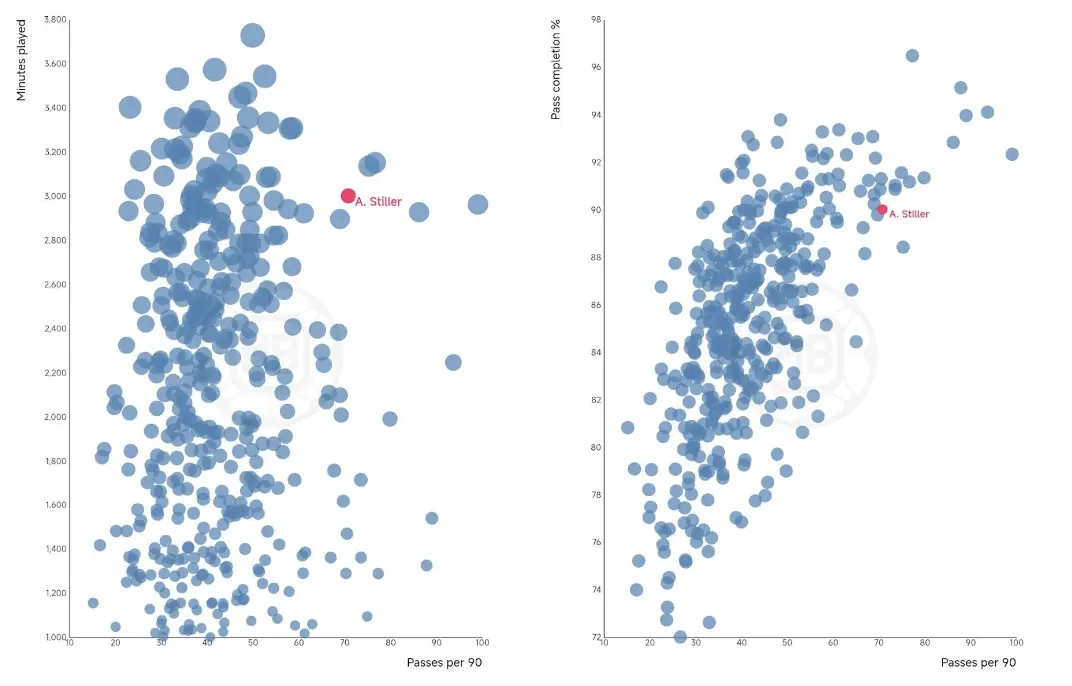
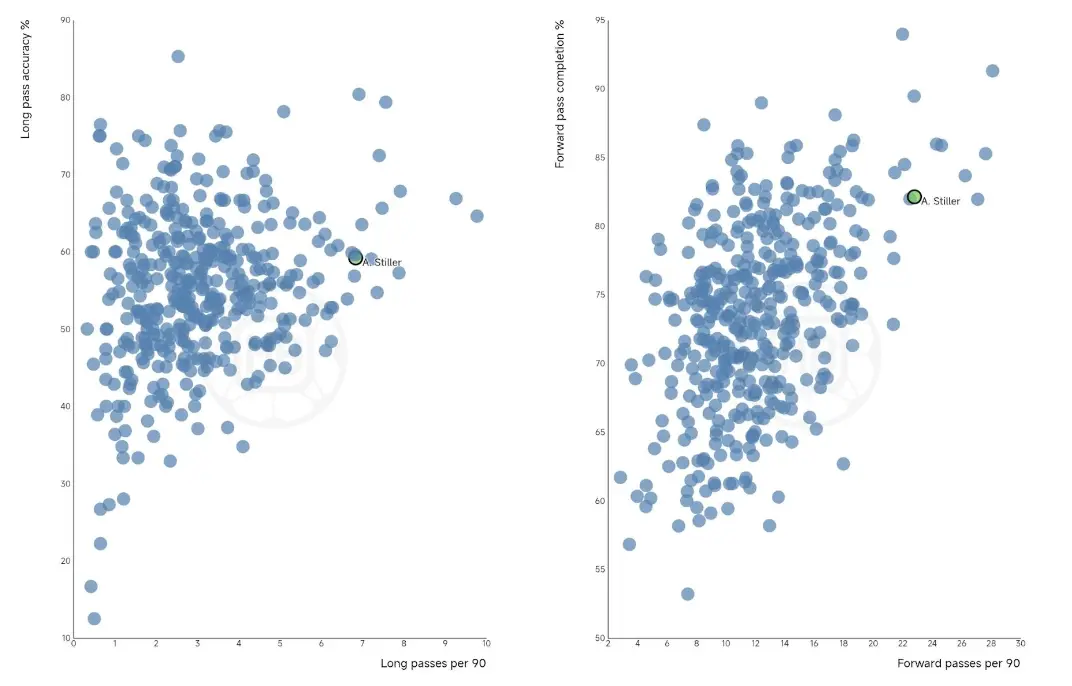
Offensively, he is among the leading midfielders in progressive passes and passes into the box. He consistently provides quality deliveries into dangerous areas, allowing teammates to attack space or capitalize inside the penalty area. He averages 65 touches per game and loses possession approximately nine times per match, meaning he successfully executes around 87% of his touches, a reliable figure for a midfielder of his caliber.
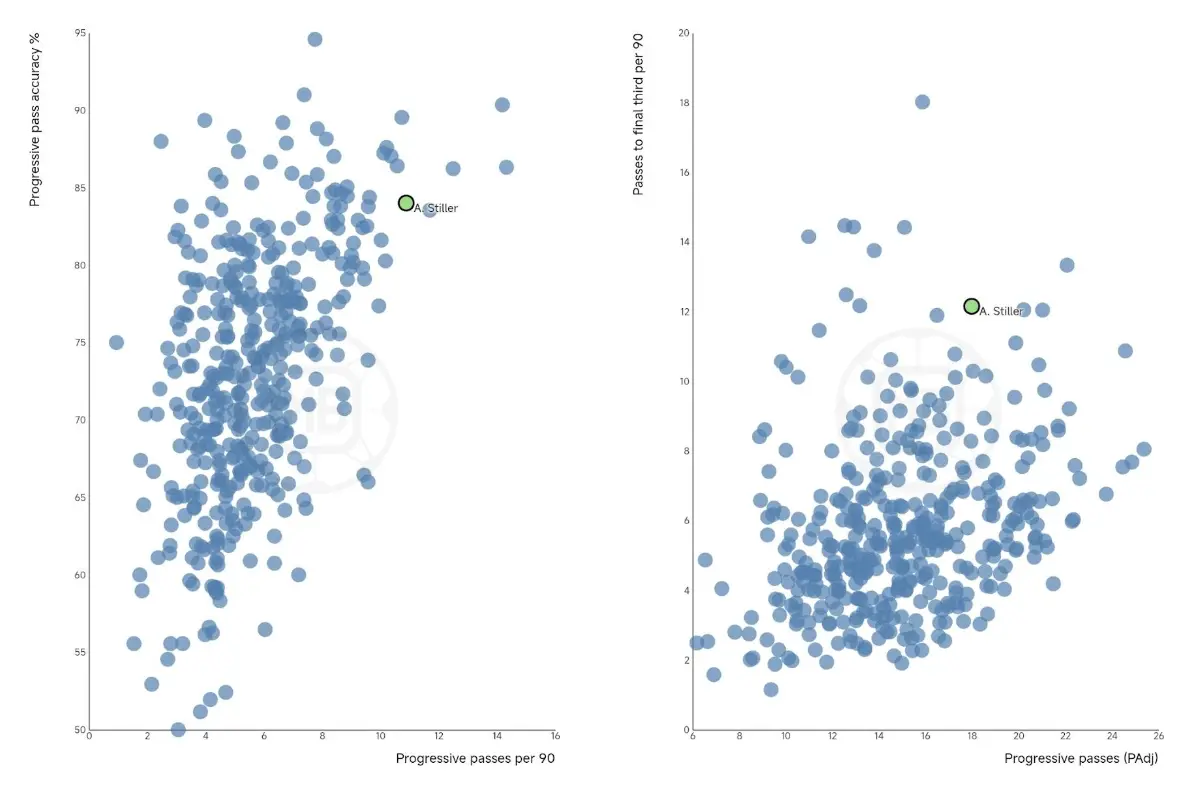
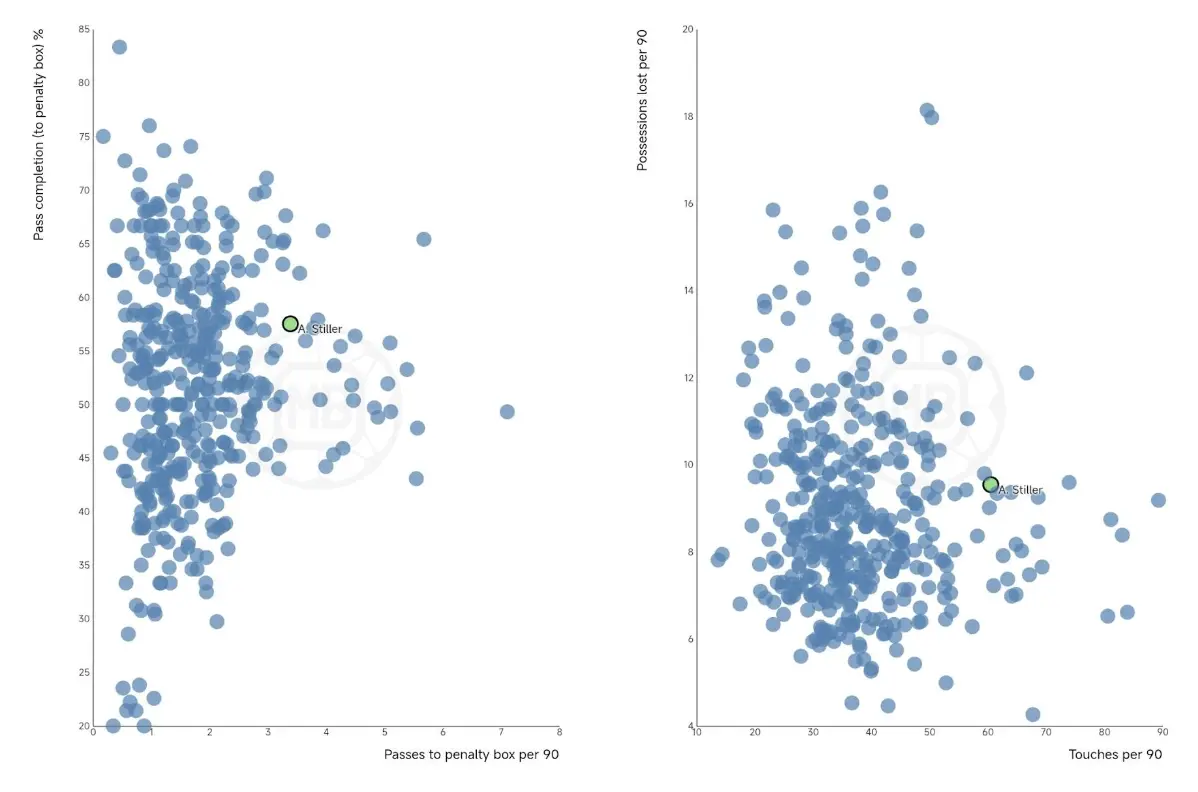
Defensive Weakness
Despite his quality on the ball, Stiller lacks physical strength and is not a standout defensive contributor. He is more of a precision-based midfielder than a player who aggressively breaks up play or excels in one-on-one duels. At Stuttgart, he relies on having a more defensive partner in midfield to cover his weaknesses. While he does maintain a respectable duel success rate, he is not the type of player who frequently engages in or dominates physical contests.
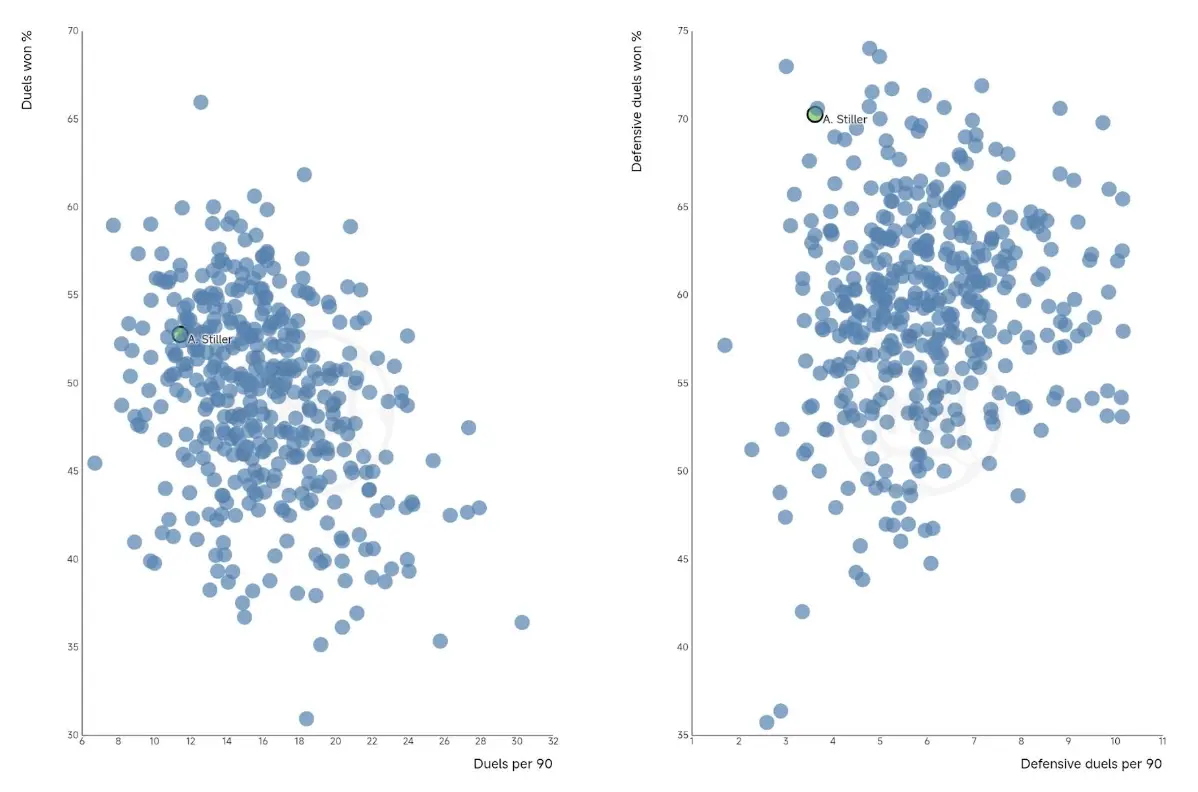
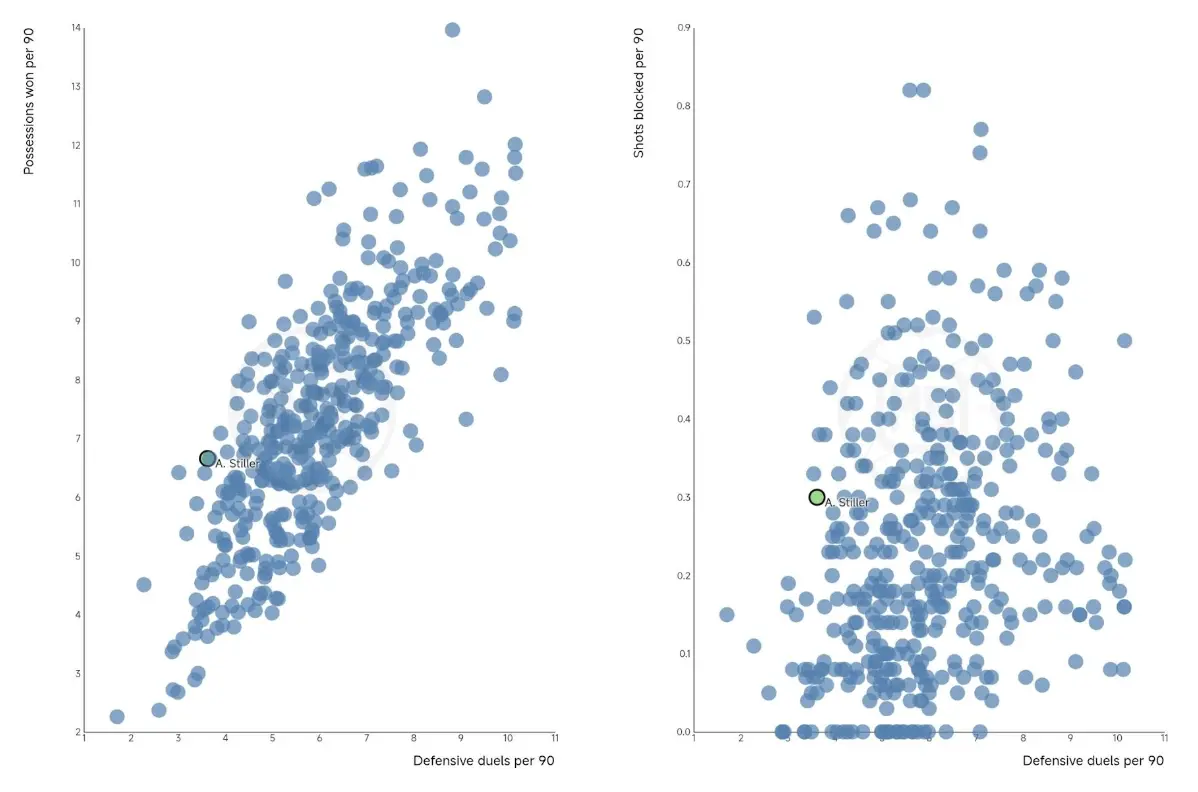
Limited Goal Threat
As the team’s playmaker, Stiller rarely finds himself in goal-scoring positions. While he excels in playing passes into the box and initiating attacking moves, he seldom takes shots himself or joins the final third with the intent to score. Though he registered 11 assists in 47 appearances, he rarely drives forward on the counter or shoots from distance. His role is to control tempo, evade pressure, and deliver incisive passes rather than act as a direct attacking threat.
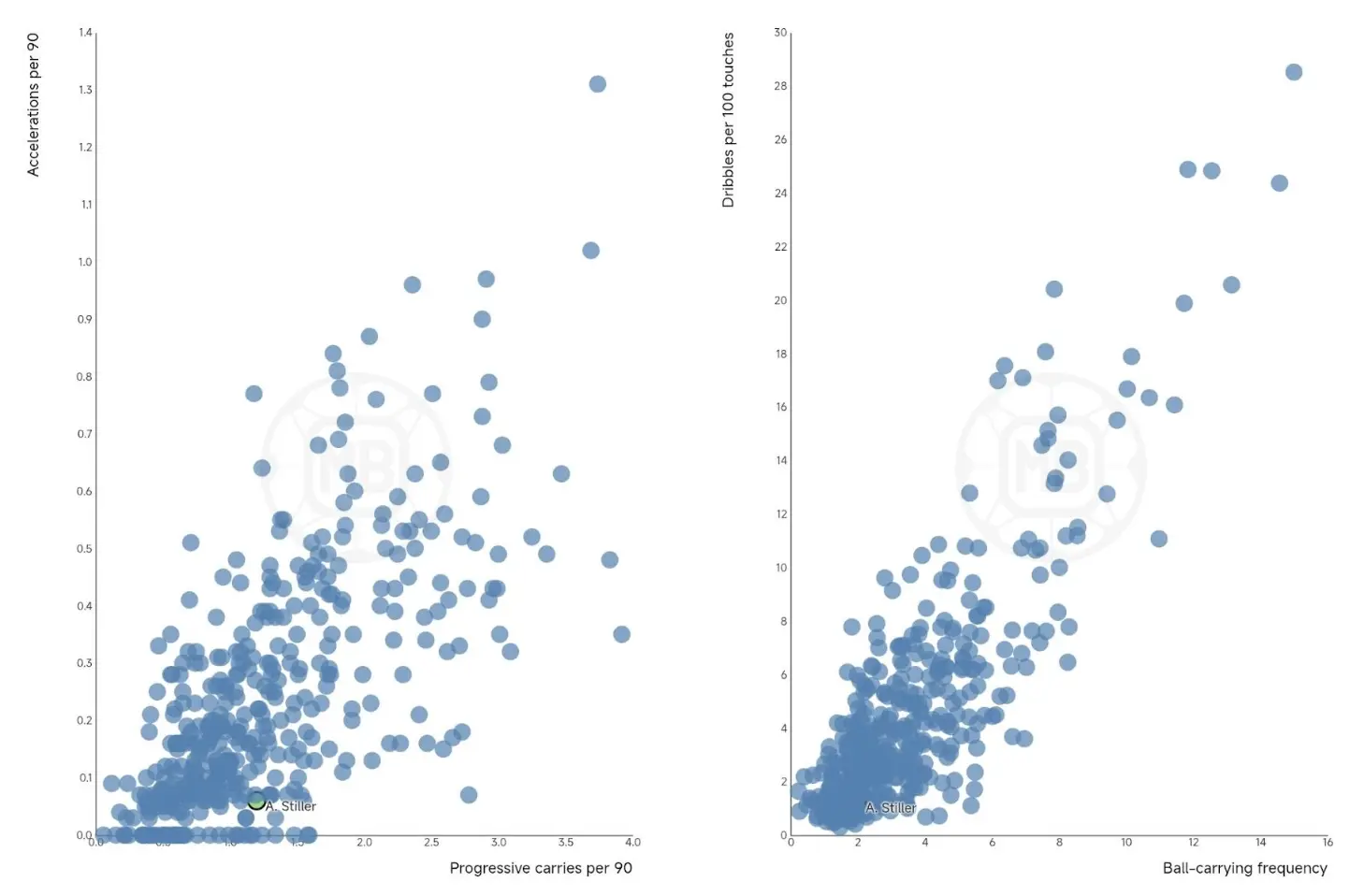
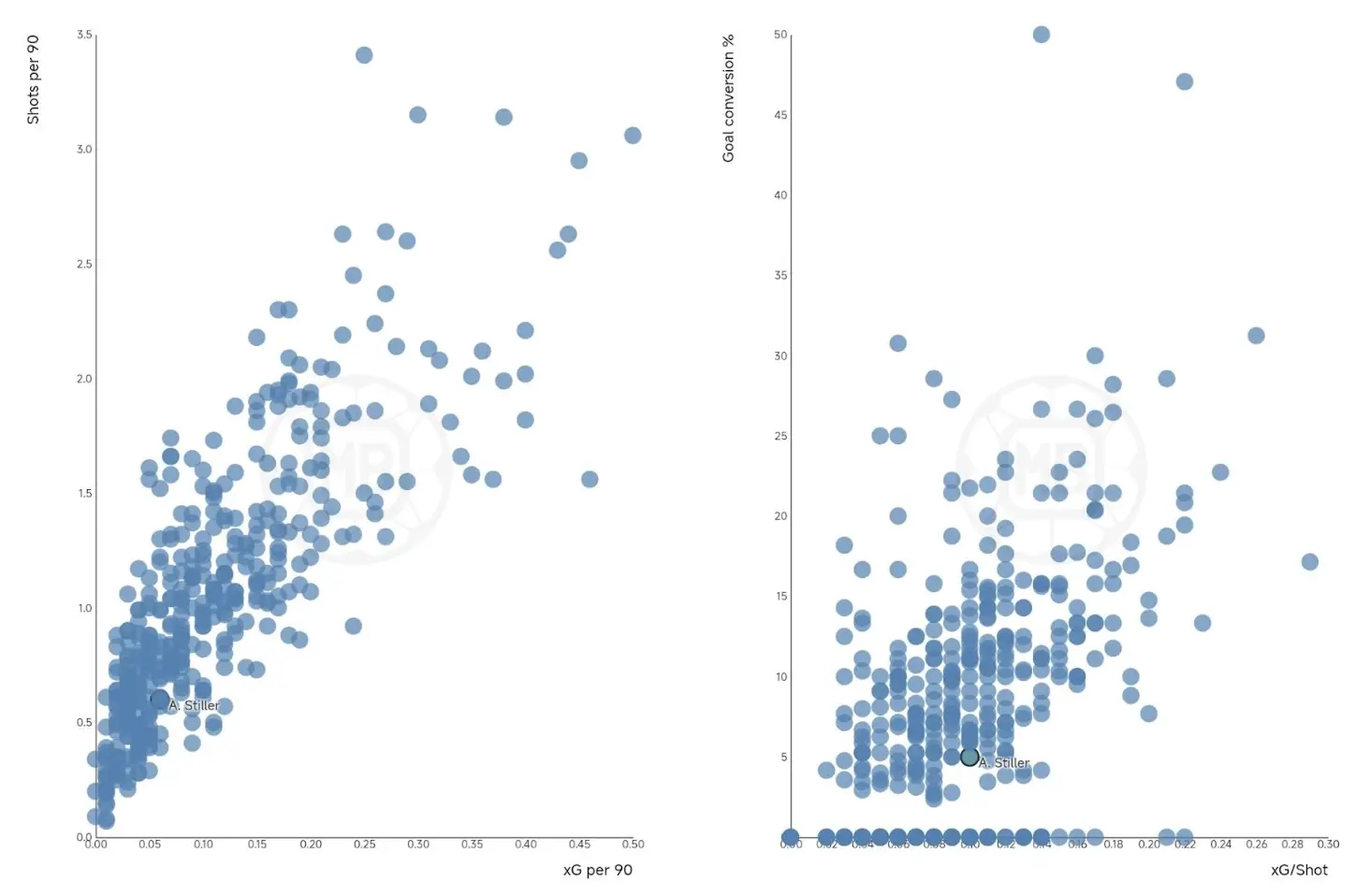
The Best U-24 Midfielder in the Top Five Leagues?
Stiller is among the most complete young midfielders when it comes to passing, though he still needs to improve his defensive presence and goal involvement. Compared to other central midfielders aged 24 or under, he ranks first in both forward passes and long passes. This passing excellence adds significant value to his profile. Although Transfermarkt estimates his value at €38 million, Stuttgart is reportedly demanding €50 million to sanction a transfer.
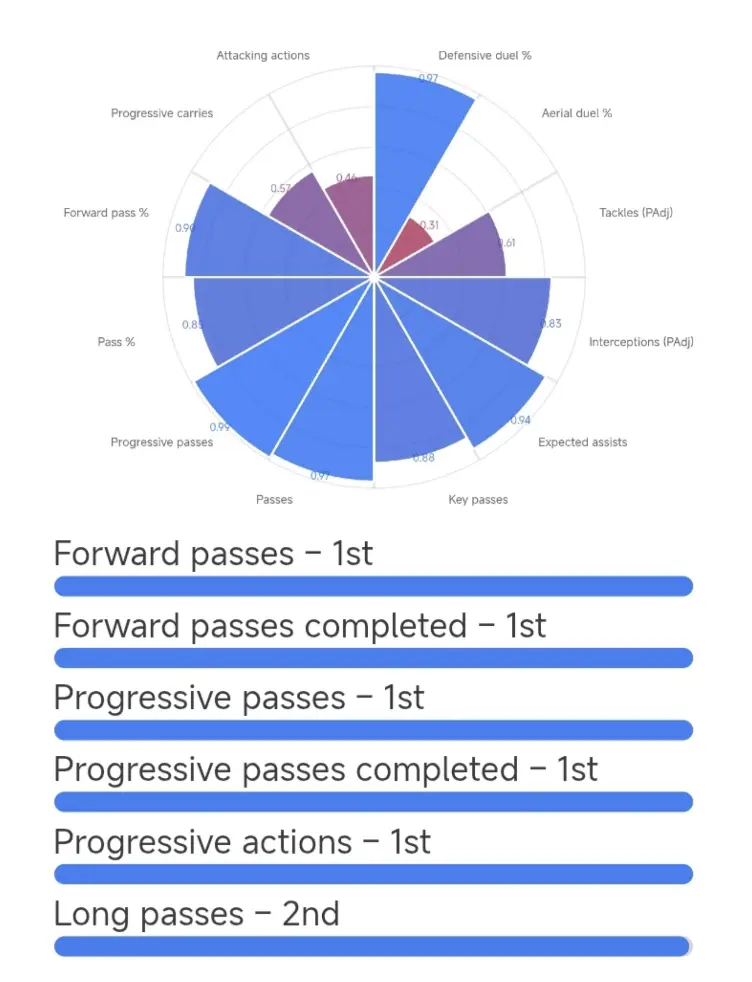
Kroos’s Successor?
The comparison to Toni Kroos is a natural one: similar role, nationality, tactical intelligence, and even a shared connection with Real Madrid. The resemblance in style is striking. When comparing Stiller’s 2024/25 season to Kroos’s 2022/23 campaign, their performances show notable similarities. Kroos may have been slightly more agile and physical, but in terms of passing quality and intelligence, Stiller comes remarkably close.

According to multiple credible reports, Kroos himself has advised Real Madrid to consider signing the young German as a potential successor — a testament to Stiller’s growing reputation. Toni Kroos may have found his “chosen one.” The question is: will Real Madrid agree, or will another European giant secure his signature?
Conclusion
Angelo Stiller is not a flashy midfielder, but he is remarkably efficient—an “architect” who thrives in orchestrating play from deep. While he may not yet offer the all-around physicality or attacking edge of the world’s top midfielders, his exceptional passing and tactical intelligence make him a rare and valuable profile, especially in a game increasingly shaped by positional play and tempo control. As Real Madrid and others monitor his trajectory, the question is no longer whether Stiller is ready for the next step—but whether the next step will be at the Santiago Bernabéu.
